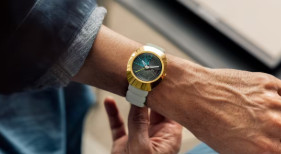Rado’s Optimistic Outlook: How Tax Cuts Could Fuel a Luxury Watch Boom
The world of high-end timepieces is bracing itself for a potential shake-up, and Rado, the Swiss watchmaker famed for its innovative use of materials, is particularly optimistic. Forget fleeting trends; this optimism stems from something far more grounded: government policy. Specifically, the potential impact of reduced taxes on consumer spending habits, particularly among those with a penchant for luxury goods.
For years, the luxury market has danced to its own rhythm, seemingly immune to the economic woes that plague other sectors. But even the most rarefied air can feel a shift in the wind. Could tax cuts be the catalyst that truly supercharges luxury spending? Rado seems to think so, and their reasoning provides a fascinating glimpse into the inner workings of the high-end retail world.
The Power of Disposable Income: A Boost for Luxury Watches?
The fundamental principle is simple: more disposable income translates to increased spending power. When individuals have more money in their pockets, they’re more likely to indulge in discretionary purchases. And what falls squarely into the “discretionary” category? Exquisite Swiss-made timepieces, of course.
Rado’s confidence isn’t based on blind faith. The company is closely monitoring economic indicators and government policies worldwide, particularly those related to taxation. They believe that strategic tax reductions, especially those targeted at higher-income earners, can have a ripple effect that benefits the luxury goods market. The argument is that these individuals, already inclined towards luxury purchases, will feel emboldened to spend even more when their tax burden is lessened.

It’s not just about buying another watch, though. For many, owning a luxury timepiece is an investment, a statement, a piece of art for the wrist. Reduced taxes can free up capital for these types of aspirational purchases, purchases that transcend mere functionality and enter the realm of personal fulfillment and symbolic value.
Beyond the Elite: A Widening Circle of Affluence
While the immediate impact of tax cuts may be felt most strongly among high-net-worth individuals, Rado anticipates a broader, more gradual effect. As wealth creation opportunities expand (which tax cuts are often designed to stimulate), a new segment of consumers may enter the luxury market. These aspiring individuals, eager to showcase their success and embrace a lifestyle of quality and craftsmanship, could drive further growth in the demand for premium goods.
This is where brands like Rado have a crucial opportunity. By crafting timepieces that represent not just luxury but also innovation, design, and enduring value, they can appeal to this evolving consumer base. A Rado watch isn’t simply a way to tell time; it’s a conversation starter, a reflection of personal style, and a testament to the wearer’s discerning taste. We at [Your Company] understand the importance of quality and craftsmanship which is why we also offer [Link to related article about craftsmanship or quality].
Navigating Uncertainty: A Cautious Approach
Of course, the future is never guaranteed. The global economic landscape is constantly shifting, and factors beyond taxation can influence consumer behavior. Interest rates, inflation, and geopolitical events all play a role in shaping the demand for luxury goods.
Rado is undoubtedly aware of these complexities. While optimistic, they’re likely taking a measured approach, carefully analyzing market trends and adjusting their strategies as needed. This might involve diversifying their product offerings, expanding into new markets, or refining their marketing efforts to resonate with specific consumer segments. The key is to remain agile and adaptable in the face of uncertainty.
The Time is Right for Optimism?
The potential impact of tax cuts on the luxury market is a complex issue with no easy answers. However, Rado’s positive outlook reflects a broader sense of anticipation within the industry. If governments around the world implement policies that stimulate economic growth and increase disposable income, the luxury watch market could be poised for a period of significant expansion. This isn’t just about selling more watches; it’s about tapping into the underlying desires for self-expression, achievement, and the pursuit of the finer things in life. It’s about selling a symbol of success. If the conditions are right, and taxes are cut, then the market for luxury watches could be primed for significant growth.







